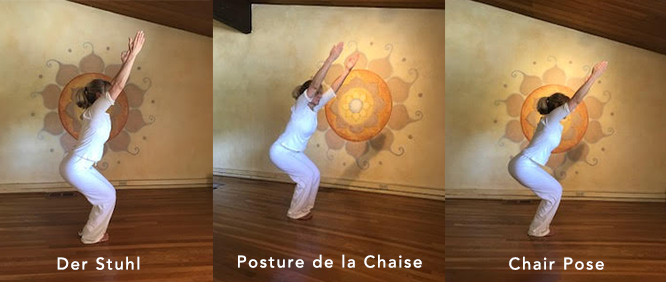Your Yoga – Utkatasana (Chair Pose)
If you would like to try this at home, here are some simple steps for coming into Chair pose:
1. Begin by standing tall in Tadasana, Mountain pose, with the feet parallel, the hips stacking over the knees and the spine long. From here, keep the heels apart but bring your big toes together, so your feet form two sides of a triangle as you look down.
2. Slowly start to bend your knees, keeping the back straight, as though you are sliding your back down a wall. Then bend the knees more deeply, as though you are sitting into a chair. Reach you fingertips down to the floor, keeping the spine long and then lift your arms out in front of you, either parallel with the ground or alongside your ears. Now check if you can see your toes and if you can’t, gently draw your knees back until you do.
3. Draw your abdominal muscles in and up to cultivate support in your core and see if you can open up through your chest as you relax your shoulders, arms stay lifted. Keep lifting the ankles out away from each other as you press the knees together for support.
4. Breathe into your experience.
5. When you’re ready to come out, press down into the feet to slowly rise all the way up to standing, lifting the arms overhead and then release the arms to your sides. Pause to notice how you feel. Finish by shaking out your arms and legs to relax.

